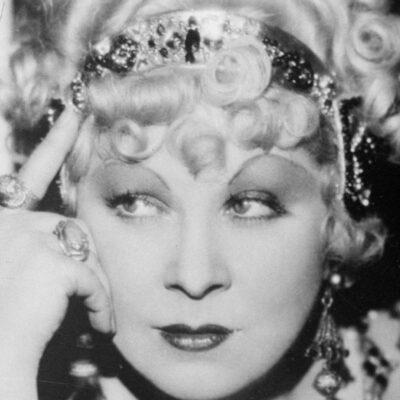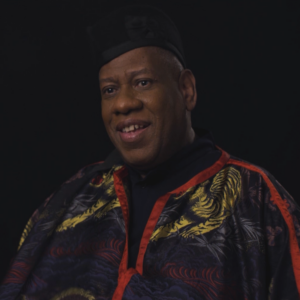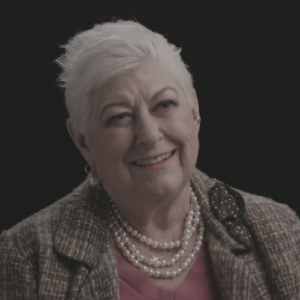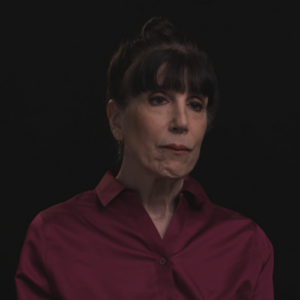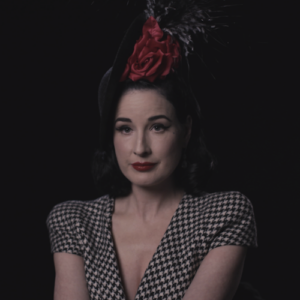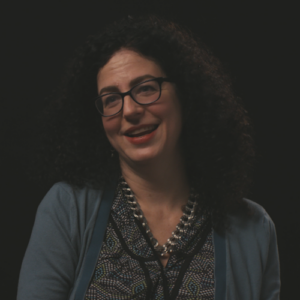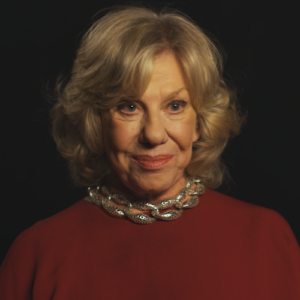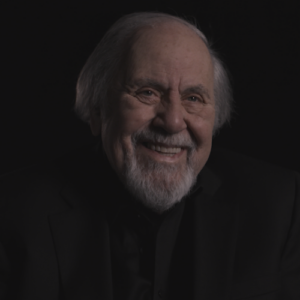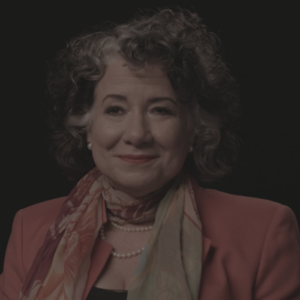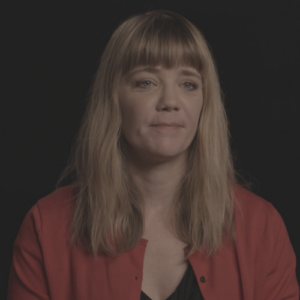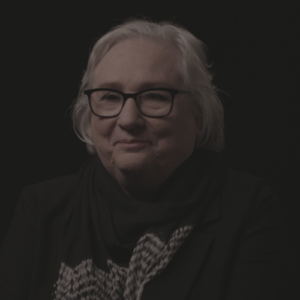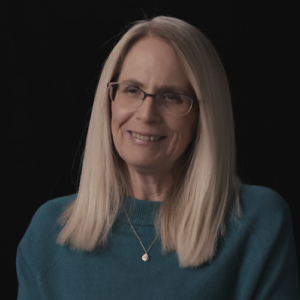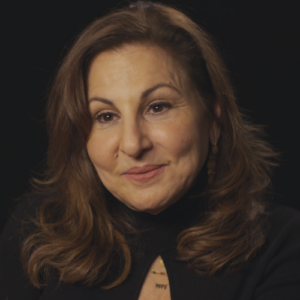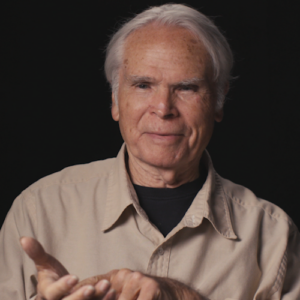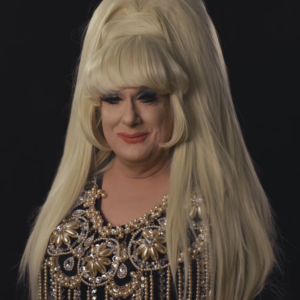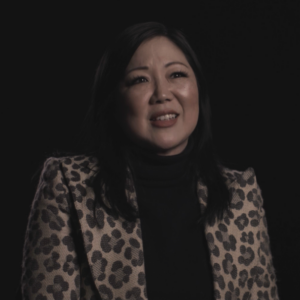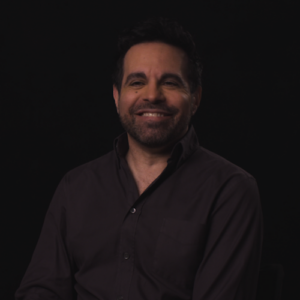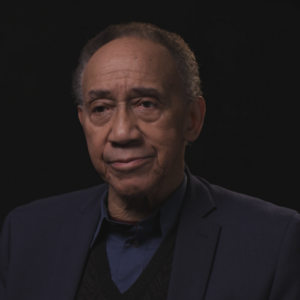George Chauncey: So New York, who of course, is profoundly influenced by prohibition, which had been passed mostly to try to eliminate the saloons where dangerous Catholic working men gathered and in fact ended up criminalizing all of the city’s nightlife since liquor sales were essential to the profitability of any place. And so the effect was just the opposite of what the prohibition advocates had wanted. They really put nightlife in the hands of criminalized populations who ran the nightlife as a criminal enterprise. So suddenly, middle class white Protestant Americans were forced to go to clubs run by working class Jewish and Italian and Irish entrepreneurs. And so there’s a tremendous amount of boundary shuffling in the 1920s as far as crosses class and ethnic lines as white middle class Americans are going to these clubs run by immigrants. But also they’re being introduced to a lot of working class cultural forms, so much more salacious entertainment and eventually more gay entertainment, so that fairies become one of the many groups that are highlighted. This is also the era when there’s a mass Negro Vogue. So lots of whites are going to Harlem to check out the burgeoning black neighborhood that’s grown up after the First World War. And then eventually they start going to village clubs and Harlem clubs, which feature pansy and lesbian entertainers. And by the late twenties and early thirties, those acts start moving to the center of town. So the club, the the Pansy acts leave Greenwich Village and are imported into Times Square. By 1931, two of the three most profitable clubs in Times Square have openly gay emcees whose entire connection with their audiences their campy repartee.
Interviewer: And what’s happening on stage at this time. What are the sort of trends in theater that sort of follows the the opening up of different social mores, isn’t it? Mm hmm. Mm hmm.
George Chauncey: Well, gosh, again, there are a lot of boundary issues there. What is respectable theater? What do you see in a Broadway play versus what you see on the roof garden in the review over the theater, which could often be racier. And part of what hit Mae West is that she brings very racy entertainment or trying to bring very racy entertainment to the Broadway stage in her plays. Sex, pleasure, man, and the drag.
Interviewer: That’s great. And so it may kind of came out of the tradition of the tough girl. What is a tough girl? And how is Mae a tough girl? Mm hmm.
George Chauncey: So. Part of why Mae West is so significant a figure for this period is that she really embodies a lot of shift happening in gender and sexual mores. She really centered herself as a kind of a working class broad who had made it rich. But she was very she performed a kind of determination to get what she wanted to be explicitly sexual. The way she performed her sexuality was so theatrical that it it made it drew attention to how theatrical it was. But she, in some ways embody the kind of tough girls who are a stigmatized group, but young women who were just very clear that they were going to do what they had to do to get what they wanted and to express desire and pursue it.
Interviewer: That’s great. So just jumping around in terms of your quick classification, so you’re heard about somebody calling themselves the CPO Mae West at a baller being quoted by an alias in newspaper. Why? Why do people camp names? Mm hmm.
George Chauncey: Well, there are a couple of reasons that queer guys adopted camp names. One is that Effeminacy was so central to queer culture at that point that many people perform themselves very feminine ways. And so adopting a woman’s name was one aspect of that. And often they would take the name of a performer who was somehow embodying the kind of cultural characteristics, social role that they wanted to play. So you could become the Sepia Mae West young African-American wanted to sort of project that image. But a second reason that people use camp names was that people often led double lives, whereas very careful for them to protect their straight life, perpetually knowledge of the fact that they were also involved in queer life, from getting back to the straight world where they were working and might be have a family and so forth. And so when someone was involved and a black newspaper and described himself as a Sepia Mae West as partly saying this is the kind of gender role he’s trying to perform with all the connotations Mae West name would have by then. But it’s also a way of making sure that if his parents read the newspaper, they’d have no idea that it was their son Johnny. It was the Sepia Mae West.
Interviewer: That’s great. So it’s funny. I’m trying to separate, like, drag. It’s okay. Well, what was the pansy craze? Hmm. Let’s just talk about May’s plays in that context. When did it come about? What was it on the way?
George Chauncey: So the pansy craze was a phenomenal moment in the early thirties when there was just an enormous amount of fascination with this new growing subculture that developed in New York and a bunch of other big cities. Of fairies and pansies and Sapphic women and lesbians. And they’d already lesbians and gay men were already performers and clubs in Harlem and in the village. They’d been performing and working class venues since the late 19th century. But in the late twenties and early thirties and the late prohibition era, there was this when clubs were cultivating the latest thing to try to get an audience. There had been a Negro Vogue, and then there was a pansy craze. And in the pansy craze, a lot of clubs started featuring lesbian or especially gay performers again in the village and Harlem. But at the height of the craze in the early thirties, some entrepreneurs imported those acts from the village into Times Square. So then in 1921, two of the three most popular clubs in the square had openly gay masters of ceremony, whose entire act involved their campy repartee with the straight people in the audience and walking around and amusing them and responding to catcalls and that sort of thing. But there were also more plays. Newspapers started giving much more attention to the so-called pansy element in city life. There were movies that had quick scenes of pansies working at village clubs and that sort of thing. So there’s a little small publishing boom, actually in the early thirties with a series of titles after Radcliffe’s Hall, Well of Loneliness really opened the doors and won a censorship lawsuit. You had books with titles like Butterfly Man, Goldie, Strange Brother, all pretty campy novels, picking up on this fascination with queer culture.
Interviewer: Great. And the most visual gay world at the turn of the century was working class. Mm hmm. So to what degree do you think that influenced Mae West views herself being a working class? Mm hmm.
George Chauncey: So the. The pansy craze happened when Queer Life The Pansy Craze happened when Curl. I’ve got a perch in middle class society and moved into middle class clubs and into Broadway. But queer life had been much more visible in working class emigrants and African-American neighborhoods in the late 19th and early 20th century, where fairies and bull tigers were almost inescapable on the streets. And in the late 1890s, everybody knew about the general resorts on the Bowery, where there were guys in makeup performing and soliciting sex, as well as drinks from straight guys who came to visit these clubs. So Queer life was much more visible and working class, especially immigrant and African-American neighborhoods, than it was in middle class. Indeed, its very visibility is part of what lent the middle class distinguish itself from the working class by upholding its own moral propriety and sense of decorum and what ought to be visible and what shouldn’t.
Interviewer: That’s really interesting. So do you think that has something to do with gay men’s appreciation for me, the fact that she was also working class? Hmm.
George Chauncey: Actually, it’s difficult for me to say. It’s really answer that question. I think they definitely saw a kindred spirit. I mean, queer men in this period definitely saw a kindred spirit in Mae West and in her camp performance and her use of theatricality and irony and any number of ways indicating that her performance of herself as a woman was really a performance which was very much in line with what fairies were doing as they performed as women.
Interviewer: When did they become known in the gay community? Was it not until the Dragon sex or even earlier?
George Chauncey: So it’s not clear to me. When Mae West was first known and we had Burt Savoy, who died, I think in 23, was an influence on her. In fact, many people would say that she adopted some key elements of her persona from Bert Savoy’s Drag Act. But she definitely got a lot of attention in 26, 27 when she was recruiting queer guys in Greenwich Village clubs to perform in her play The Drag. And by the early thirties there were gay acts where people were basically playing Mae West.
Interviewer: So as a general question, what are the characteristics of women who become gay icons? I mean, it seems to be the same today as it was in 1820.
George Chauncey: Can we just talk about Mae West?
Interviewer: Well, talking about the events you create, the nightlife you describe the drag balls. Mm hmm. What were they? Were they how many people came to them of size? Like how how big an event were they? Many were there.
George Chauncey: Right. So the late 19th and early 20th century were the great era of society. Balls of all kinds. Middle working class as well as upper class. And they were very important in black neighborhoods. And one of the fraternal orders that organized these balls seems to have been taken over by a queer element by the end of the 19th century so that we can see that there are already drag balls, a lot of so-called female impersonators showing up in Harlem by the early 20th century. These drag balls flourished in the village in Harlem in the twenties, but in the late twenties, as the pansy craze developed, the number of people showing up both to perform in the balls and to watch the balls grew enormously. So the biggest balls drew hundreds and hundreds of female impersonators and male impersonators and their escorts and thousands, literally thousands of straight spectators who were there just dazzled by the brilliant performance of the female impersonators. The biggest balls were in Harlem, but they were held in Midtown. And at the height of the pansy craze, they were held in Madison Square Garden.
Interviewer: That’s incredible. So? So they were it was an openly publicized thing. It wasn’t sort of an underground.
George Chauncey: These were not underground at all. The Harlem press would publish big stories about them the day after. They’d have sketches of the winning costumes and hand photographs of the people had won the costume for a story. The Black Press would publish stories about these balls the following week and sketches of the winning gowns, and then photographs of people would organize the balls, and the people had won a drag contest. They got lots of attention in the press and even some attention in the tabloid press. My favorite headline comes from a paper called Broadway Brevity in 1931. Fag Balls Exposed was the big headline. 6000 crowd. Huge hall to watch drag queens.
Interviewer: That’s incredible. So it’s into this space that that may comes with the drag. Mm hmm. I guess for one thing, just how unusual was it for a straight woman to be writing in place?
George Chauncey: Well, it was pretty unusual for anyone to be writing plays in this period. I can’t think of so, actually. Hmm. I can’t think of any other straight woman who was writing a gay play in this period, though there were not a lot of gay plays. There were some, but not many.
Interviewer: And can you talk about how she didn’t start, how she created. I feel like you referred to everything. Mm hmm.
George Chauncey: Yeah. So for the drag, she she actually went into a bunch of Greenwich Village speakeasies where the queer set hung out and recruited 40 or 50 queens to come be a part of her show. I think she gave them tickets to see the pleasure man and then told them to stick around for a stage test after that recruited them. And the stories she told really grew out of her knowledge of gay men. But the third act of the play was, in effect, just a spontaneous enactment of a queer revue or a drag ball where she didn’t script it. People were able to just do what they might do in a convivial gay setting.
Interviewer: And her knowledge of of gay men, the culture that came from working on the stage or from where she grew up. Mm hmm.
George Chauncey: So, you know, I don’t know that we know exactly how Mae West learned about gay people, but I assume it was both from the fact that she grew up in a working class neighborhood where there would have been it was likely that there were very obvious bold queens forming around not in dresses, but well known to people in the neighborhood as fairies. And then she was in the theater, She was in burlesque and reviews. And there were tons of gay performers. And those, including a number of people who were doing pansy acts. So she would have had lots of exposure.
Interviewer: If you’ve read the drug, have you read the draft?
George Chauncey: Yes, not for a long time, but and I couldn’t find my copy. But yes, I have read the drag.
Interviewer: How how is it different from the other gay plays of the time? Mm hmm. Was it different?
George Chauncey: So Mary Beth Hamilton’s probably written the best work on this, but. The other major play on stage at the time that sex and pleasure man were in the stage and she was trying to bring the drag. The stage was called The Captive, a French play that was considered a very serious drama by the serious critics dealing with the question of a married woman’s falling in love with another woman, being seduced by women, being held captive by that woman. And it was given a lot of attention, a lot of critical praise, I think, in part because people really admired it, but also because they wanted to protect it from the censorship movement. And when Mae West brought in her very overtly sexual play’s sex, you know, brothel basically, and pleasure man, and then talked about bringing the drag to New York from New Jersey in Connecticut, she just really threatened to upset the apple cart. It was going to be very hard to counteract the censorship forces if plays that seemed that crude, that closely connected to queer culture, were allowed to be on Broadway. Again, she was crossing a pretty dangerous boundary there, moving away from working class clubs and even some nightclubs and Times Square revues where you would openly have queer performers. That was sort of acceptable in the context of the twenties and prohibition culture. But to move that into Broadway and to a legitimate stage really threatens the legitimacy of that stage. And indeed, it did provoke a censorship movement.
Interviewer: Can you talk a little bit about the fact that it never even opened in New York? It just sort of just you just said. Right.
George Chauncey: So the drag never had a chance to open in New York, because before it did, the police raided the captive a serious lesbian play and Mae West play and arrested the performers. And they both ran briefly but then were shut down. And at that point, it was just clear she couldn’t possibly bring the drag to the stage. And the controversy over Mae West. Three plays and the captive really strengthened a censorship campaign that was already underway with William Randolph Hearst playing the newspaper magnet, playing a key role in that. And so just a few months later, the New York state legislature passed what was called the padlock bill, which threatened to put a padlock on any theater that had a play that dealt with sexual perversion or included sexual degenerates in it. And this, in effect, put this censorship lock on the Broadway stage for the next 30 years. So there were some plays certainly that dealt subtly and directly with queer issues, but it was a part of a larger censorship campaign that tried to just eliminate discussion of questions of homosexuality. Just a few years later, the Hollywood studios were also facing their own censorship campaign, and they enacted a production code which also prohibited the depiction or even the inference of sexual perversion. And that was much more strictly enforced than the one on Broadway. So it really eliminated overt discussion of homosexuality for 30 years. And what was the most important medium of mass culture in mid-20th century America?
Interviewer: It’s amazing. So when she’s arrested for sex, it’s been playing for a year already. She’s really being arrested for the drug to prohibit it coming. Is that fair to say?
George Chauncey: Hmm. Mary Beth can give you a better informed answer to that question.
Interviewer: But the draft touches on some pretty dark themes. I mean, it gets into police brutality and homelessness and drug addiction and all that, I guess is, first of all, how much were people aware of that even second vote in other sort of gay plays at the time? Were those were issues like that being talked about or was it more kind of from there? Mm hmm.
George Chauncey: No, I think it’s it’s a pretty. The fact that Mae West dealt with the dangerous consequences of the policing of gay men and their ostracism really makes her play the drag singular in this period. In most spaces, gays were just there to elicit laughs with their camp jokes and sexual double entendre and so forth. And Mae West certainly had plenty of that. But she also really wanted to talk about the difficulties that queer people experienced in the 1920s. And I think that’s part of why this play was so compelling for a lot of queer people at that time.
Interviewer: That’s right. In her opinion, at least at the time of of gay men, was that there were women trapped in men’s bodies. Mm hmm. Typical opinion. Mm hmm.
George Chauncey: And probably the most widespread theory trying to explain homosexual desire. Say, would say again. Um. The most common theory, Trying to explain why a man was attracted to another man was that he wasn’t really a man because a man couldn’t be attracted to men and he had to somehow possess, as people said, a woman sole and a male body. And so his desire was really thought to be a womanly desire. And in fact, the ready distinctions that we draw today between transgender and homosexual were not drawn in the early 20th century, often thought of together. And so a fairy, a pansy, was considered woman like. And, you know, we we don’t know or we can only imagine that many so-called fairies or pansies came to that term from a variety of directions. So there doubtless were some who today we would call transgender who really did feel themselves to be women born in the wrong body. And there were others who could only understand their sexual desire for other men by thinking it was somehow a womanly desire, given the way desire was understood at that point. And Effeminacy was so central to queer culture, queer male culture, that this was, let’s say a lot of queer men performed a variety of forms of male femininity from the camp behavior, the way they walked, the way they talk, their interests, their mannerisms, personalities and so forth. So a wide range. And then there were others who just thought this is what they had to do if they wanted to attract the sexual interest of another man. Of course, there’s that great line. And the drag queen talks about walking up 10th Avenue and all the meat that sizzling and talking about this working class neighborhood and just imagining that this queen is eliciting all this desire from normal men because of the performance as a queen. So there are a variety of ways in which people came to this label, a fairy.
Interviewer: It seems very sort of parts of that place are very incisive for a straight woman to be aware of that kind of thing, that the depth of feeling in the in the drag. Is unusual.
George Chauncey: Well, I think the the depth of feeling the. Hmm. The depth of feeling, the range of queer experiences that the drag dealt with were pretty unusual. It’s partly Mae West and partly Mae West seemed to work very closely with a larger group of queer writers and creative types. And so this is not just her own play. This is something that she put forward but had many different people bringing their input. But I can’t think of any other stage play that we could say that about.
Interviewer: Oh. So do you think that’s partly why she wrote those plays to to to get attention to become notorious? Or was she more trying to shine a light on certain issues?
George Chauncey: I don’t.
Interviewer: Know.
George Chauncey: Know I talk with someone like Mary Beth, who’s written more about Mae West in particular.
Interviewer: So when when the drag opens out of town. What is the critical reception to it? Do you ever get that for?
George Chauncey: I did write about that. What did I say? I looked at those reviews 30 years ago. What did I think? Catch me if I’m wrong. The the drag did the drag when it was performing in Connecticut did get some New York reviews and they were pretty mixed. Some absolutely condemned it. They just thought it was it wasn’t theater at all. It was just a cesspool of vice and crude sexual expression. There was at least one reviewer, though, who thought it was quite interesting and sharp.
Interviewer: And I just want to touch a little bit on the pleasure man, really, only because we have some amazing photos of him. You know, there’s photos of the arrests of the men being bundled into paddy wagon and everything. The punishment comes after the law against sex degeneracy on stage, Right. I mean, she writes it after that.
George Chauncey: Yeah. I’m afraid you’ll need to talk to someone who is worth more on Mae West to give me that precise history.
Interviewer: All this also talk about the term gay. Mm hmm. It meant something very different then. You mean prostitutes? Mm hmm. Mm hmm.
George Chauncey: Well, gay already in the twenties and early thirties, was a term that was associated with gay culture. Within gay culture, even though people weren’t using it to call themselves gay. It was gay was a term that was used by the kind of pansy performers and pansy fairies who Mae West put on stage, partly because of all of its opposite, meaning it could mean sexual pleasure, degeneracy, flamboyance. So fairies were often in the twenties and thirties would say, Oh, that’s so gay, or I’m so gay because of the way I’m behaving or that so gay the way it looks. And so it it developed a kind of queer connotation so that it could be used as a code word. By the thirties, we can see that it was used as a code word so that in a dangerous environment where there were other straight people around, one person could ask another person if they knew of any gay places in town, and that other person would know if they were wise to the codes that there was asking about homosexual places and could tell them where to go. Or it could say I had a gay time last night, or I met a gay gal and that would communicate. So gay vernacular speech was started with these sorts of code words in the twenties, thirties, forties, fifties and sixties, because people had to protect themselves from vigilante violence just being discovered to be gay. And so it used terms, and gay was definitely one of those. It’s really in the late thirties and especially during World War Two, that Gay became very quickly almost a universal term that gay men and women used for themselves. That’s great. But it wasn’t known to outsiders.
Interviewer: At what point do you think it became known to outsiders much later?
George Chauncey: So. Gay was only known to have homosexual meanings to gay people in the forties and fifties. But increasingly scandal magazines exposes would use the term would explain that gay meant homosexual and certainly by the mid-sixties. I’ve looked at court records where a bartender is trying to pretend that he didn’t know what and the village who worked at a gay bar that was being closed down because it served homosexuals. Tried to pretend he didn’t know what the word gay met. And he was just ridiculed by the prosecuting attorney. How could you work at a club in Greenwich Village and not know that gay means homosexual? So hip straight people were definitely clued in the sixties, but I think the homosexual, meaning so gay, really only spread in the seventies when the Gay Liberation Front named itself gay, claimed this term and turned it public.
Interviewer: That’s really interesting. The you know, the double entendre thing, you know, it’s just it’s the language, a language of game. And it’s also the language of Mae West. Mm hmm. You talk about that sort of giving words secondary meaning you think they influenced me or do you think they appreciated Mae because she was doing that herself? Mm hmm.
George Chauncey: Um. So double entendre was used more widely in general in the twenties and thirties and forties and fifties because a lot of people had to say things, especially sexual things in coded ways. But gay men became expert practitioners of the art of speaking and double entendre because they so often had to communicate secretly to one another in the presence of straight people. So they became acutely sensitive to the possible double meaning or double entendre of a term. And I think that one of the things that they appreciated about Mae West is that she flourished by using double entendre that was so close to the edge, it was pretty clear what she was saying. But she she could communicate a lot. And I think there weren’t a lot of straight people who had the same command of double entendre that Mae West did. It made her seem a bit queer.
Interviewer: So going back to those big popular queens of the teens and twenties, Julien Outage and especially Bert Savoy, where do you see where do you see their influence on performance and style? Mm hmm.
George Chauncey: So Bert Savoy was. It’s true. I’ll say it. You can use whatever. So female impersonation had been a very legitimate form of family entertainment in the 19th century and into early 20th century. People were amazed by the capacity of someone like Joy and Elton. She was the most famous female impersonator about ERA to create the illusion of being a woman. In fact, he was so successful that he created a magazine of his beauty tips for ladies and women, bought his makeup and took his fashion tips because he was so good at creating the illusion of a woman. There was another tradition of female impersonation that you’d see more when a football team would put on a drag act, which they did actually in the 19th and early 20th century, whereas a burlesque showing they were real men, they couldn’t possibly behave like a woman. So you had these two very different forms of female impersonation, Burt Savoy, who really. Burt Savoy. He really takes off in the mid teens, was unlike these earlier forms of female impersonation in that he was much campier. He was much more performative. He drew on queer culture and highlighted the artifice of theatricality of his performance as a woman, and also really stressed the sexual elements of his performance and his appeal to his audience. And it was so sorts of things that Mae West picked up on. It’s why some people call Mae West the first female female impersonator because she was so theatrical in her performance of femininity and so overtly erotic and the way she performed herself as a woman. And in many ways, she’s picking up on the kind of styles of a character like Bert Savoy.
Interviewer: That’s great. And people start impersonating her pretty early, don’t they?
George Chauncey: Yes. So very quickly. Mm hmm. So a lot of drag queens, pansy performers chose various female celebrities to model themselves one. And Mae West pretty quickly became an important one. The most famous, remarkable early example of this was when a performer named Jean Maitland, a Polish Lithuanian immigrant kid who became a very famous pansy performer in New York in the early thirties and then in Hollywood in 3233, performed in a movie called From Arizona to Broadway. He played a role called Ray Best, as in Mae West, and he has a stage number in that play, which is clearly modeled on Mae West stage number from She’d done him wrong. And so he is so clearly imitating her imitating a drag queen, you know. Part of what I love about shoot on I’m Wrong is that scene with Cary Grant, who’s playing a Salvation Army missionary who comes down to try to save Mae West Soul. And you just see in that scene Mae West performing her femininity and her eroticism and the way she walks around the room, waddles around the room. It’s like an early version of talking almost the way that she’s moving herself. And then her response to responses to him, you know, he says, I wish you cared more about your soul than your diamond. And she said, Well, I wish you cared more about my diamonds. And she says, Hasn’t a man ever really made you happy? And she says, Sure, lots of them. I mean, this is something people had not seen in film before. And when she does that, she’s picking up on the kind of camp repartee that a queer performer, a pansy act, would have had in one of those nightclubs in Times Square.
Interviewer: That’s fantastic. Now you define you like when we started this project, we had this idea of campus kind of May in the sixties and seventies, but it’s sort of, you know, a thing that happened to these kind of older divas. But you define it very differently in your book. Mm hmm.
George Chauncey: Well, camp was a term that was already being used by queer men in the 1920s to describe a certain kind of cultural style. And I’m not the first person to say this, but I think camp in this period was both a cultural style and a strategy as a style that really emphasized irony, incongruity, theatricality. It it highlighted the artifice of social convention at a time when social convention represented itself as natural, ordained by God or nature or nature, and the way men and women should be in the relations between them and so forth. Well, queer men are usually had men excluded from that image of normality and had been condemned as unnatural. And with their camp wit, they were really able to say, Well, no, there is nothing natural, it’s all unnatural, it’s all a social artifice. And we’re going to perform the theatricality and the artificiality of social convention. So in such an exaggerated way, you can’t escape that. It’s a social convention. And that again, is it what it seems to me what Mae West does and her performances in the twenties and thirties, she’s performing as a woman, but it’s so theatrical and there are so many wisecracks that draw attention to that performance as a performance. And again, it’s eroticism in a way that was supposed to be very subtle or hidden behind Scrooge.
Interviewer: That’s really three of my questions are.
George Chauncey: Just trying to race through.
Interviewer: So, I mean, are you familiar with these later work like them? I’m sort of interested in how you see it through a camp lens that 2050.
George Chauncey: Yeah, I know. I know it only very vaguely. I don’t really.
Interviewer: Well, do you think it means something different now?
George Chauncey: Oh, camp has so many different meanings and it’s used by different people in different ways. But yeah, I mean, I think. Camp doesn’t have the same meaning and the same significance in queer culture that it did, say from the 1920s through the 1950s and sixties, because that old style camp was a product of a deeply oppressive situation in which queer people were denounced as unnatural. And as gay people have come to be more and more accepted in American society. That kind of bitter, sardonic, ironic edge in relation to the dominant culture isn’t necessarily as strong. And I think it’s why you you see it sort of most beautifully expressed on some of the most marginalized queer communities, particularly in communities of color.
Interviewer: What about, do you think May’s biography was part partly what appealed to gay men like that? It becomes part of her persona. It’s kind of this working class woman, but knowing where she where she came from. What about her Did men really identify with?
George Chauncey: So again, I just don’t know about what they knew about her personal biography. So it’s I’m not sure what I have to say besides what I’ve said about it. In fact, she enacted.
Interviewer: Something that was very interesting that you talk about in your book. I didn’t really understand this, was hoping you could sort of clarify. You talked about the gender fluidity of the 1920s and what was different then. Did it change in 1930?
George Chauncey: So there was a lot of cultural experimentation and sexual experimentation in the 1920s in the context of prohibition and the virtual criminalization of nightlife and the fact that people were crossing so many different boundaries, social boundaries, trying on new things. And that and I think that one of the reasons that queer culture was able to become so prominent and generated so much interest and the twenties and early thirties was that people felt secure. They were able to approach queer culture from a position of confidence in themselves. As the Depression deepened, it so challenged gender arrangements and hierarchies. A third of American men lost their jobs and their role as breadwinners in their families. And there was a tremendous crisis in the family and in gender relations more generally. So if people felt confident in the twenties and exploring gender and sexual and gender and sexual possibilities, that confidence was really shattered by the Depression. A third of American men lost their jobs during the Depression, which mean that they lost their position as a breadwinner in the family. And it was widely felt that there was a crisis in the family and gender relations more generally. And in that context, there was a real pushback against women’s rights, women’s equality, women’s equality. Laws passed to force, say, women schoolteachers to give up their jobs if they got married so that they wouldn’t be taking away the job from a man. And I think it’s in that context that there was a real shutting down and this experimentation many people. Many Americans blame that of the depression on the freewheeling culture of the speakeasies in the 1920s that American society become undisciplined. People would follow their own desires, and it was as if this was God’s payback for the disillusioned, dissolute character of the 1920s. So there was a tremendous upsurge in conservative activism in the early thirties. We think of that as the Roosevelt New Deal era. And indeed there was a lot of very progressive legislation passed, but there were some pretty conservative legislation passed restricting women’s access to jobs and trying to shore up men’s position in their families. And it’s in that context that after the repeal of prohibition in 33, a lot of states enacted regulations that prohibited gay people from gathering in bars or bars from even employing gay people. The Hollywood censorship code was put in place which prohibited any representation of abortion or interracial relationships or sex perversion. So there was a real clampdown in the early thirties. And what happened to queer culture was a part of that larger context.
Interviewer: So do you connect the the rise of the production code being enforced to these sort of attitudes about the Depression and what caused it? Because those movies are, you know, advocating a certain kind of liberation.
George Chauncey: Right. I mean, you know, the pre-code films or the films made before the code was really early. Being enforced in 3334 are really quite astonishing. The degree to which they dealt with prostitution, sexual harassment at work. It just would have been unimaginable literally just two or three years later. And there were also a number of films that had queer characters, pansy performers. Famous German performer, Marlene.
Interviewer: Thank you.
George Chauncey: Show this in the first episode of my class. First class meeting. You know, in the early thirties, films were dealing with very serious sexual issues. Sexual harassment in the workplace, women forced into prostitution, sexual violence. They also dealt with homosexuality, their films that show pansy performers in Greenwich Village. Marlene Dietrich, wearing a top hat, singing a song, and seducing a woman in front of a large audience in a moroccan club. It was extraordinary. And all that was shot down by the production code, especially once it started being seriously enforced in 33, 34. And the movement that led to that code and the enforcement of that code, I think it did grow in part out of this conservative upsurge in the early thirties, which looked at the experimentation of the twenties as a dangerous, immoral and possibly. One of the causes of the depression itself.
Interviewer: Wow, That’s really interesting. So so Mae West, in the middle of all of this, must have seemed like an incredibly threatening figure. Mm hmm. So her movies in the. Because, you know, it’s really the first three that are that are kind of pre-code and have the good jokes and everything. And then it takes a pretty sharp turn as things get cut out. That’s that’s partly because of this kind of change in social mores. Mm hmm.
George Chauncey: Yeah. Mae West is only one of many examples of performers who’d been in much more risque films, giving much more risque performances. You had to tone them down from the mid thirties on. You even see it on the cartoon strip, Betty Boop. Betty Boop as an actual absolute sexpot in the early thirties and then becomes a kind of suggestive but much more sedate character in the later thirties. So Mae West had to tone down her act, but everyone was having to tone down their act.
Interviewer: You know, we we wrote for any proposal. We talked about the idea of Mae West as a barometer for the codes of morality. Mm hmm. I think that’s a safe thing to say in terms of 1820s thirties. Mm hmm. Yeah.
George Chauncey: Yes.
Interviewer: Okay.
George Chauncey: You know, in many ways, Mae West is a barometer for the codes of morality in this period. I mean, she is so out there and her public persona in her films and the late twenties, early thirties, when many other performers were and many other Americans were. And then she had to tone it down beginning in the mid thirties when the censorship movement had had its effect. And there was a general reeling and movement away from the experimentation and eroticism of the 1920s and the wake of the Depression and its challenge to gender norms and sexual norms.
Interviewer: Did they? First of all, thank you for saying that phrase. Did the the sort of the generals. Was there a shift again in World War two as men are going off to war on women, go back into the workplace? Mm hmm. Or did they kind of stay in those kind of rigid boxes from the Depression?
George Chauncey: So the Second World War had a profound impact on gender relations and the representation of gender, but it was pretty contradictory. On the one hand, almost for an entire generation of young man was taken out of the factories and other workplaces where they’d been and sent off to war. And so suddenly women were encouraged to take jobs. Just a few years earlier. Everyone had said women could not possibly do. They were too demanding, too heavy, too skilled and so forth. And there’s lots of images of that. And so there’s there’s really a kind of revolution in gender norms. And at the same time, the war itself, as propaganda depicted it reinforced gender difference. So it was always the men who had gone off to fight on the battlefront and the women who were back home supporting them on the home front. And so for all the ways that gender was disrupted by the war, there was a lot of work done during the war itself to try to recuperate gender norms. So, for instance, there were make up ads and big glossy magazines that showed that even an industrial worker could put on the right cold cream and she would look just as sweet and lovely as she had, even if she hadn’t been handling an industrial lathe all day long.
Interviewer: Oh, and then after the words, the same thing happens, right? That that happens during the Depression in terms of the women being booted out of their jobs. I mean, that the women kind of reacted a bit differently.
George Chauncey: Right. So really, on the day victory over Japan was announced, hundreds of thousands of women working in defense industries lost their jobs and union contracts and management preferences meant that they had to give their jobs over to veterans who might have had them before or who needed jobs. And and so there was this tremendous effort to push women out of the workplace and back into the home. Although already by 1950, more women were working than had been working at the height of the war, because as people moved into the suburbs and into those nice homes and buying lots of consumer durables, the sort of the American dream of the postwar period turned out to need more than the husbands paycheck to pay for them. So lots of women, but they were typically kept the lowest rungs in the factories in gender segregated work and of course, in the booming corporations of the postwar period. They were the secretaries, by and large, to the men who held the managerial positions. There were plenty of exceptions, but that was the broad trend.
Interviewer: Q What would the idea of a actually, I guess, sort of do this? So Mae West is kind of a drag queen. A woman can be a drag queen. Mm hmm. You think of any other women who are drag queens?
George Chauncey: Hmm. Hmm. Hmm hmm hmm hmm hmm hmm hmm hmm hmm hmm hmm hmm. I’m really not good on contemporary pop culture.
Interviewer: Sure. Well.
George Chauncey: That’s about the toast of the fifties.
Interviewer: Why do you think there’s even in the early days, this persistent rumor that, erm. That she was a man? What is. What is it about her and her presentation, Her personas that would lead people to think that.
George Chauncey: I think the people who thought Mae West was a man saw someone who was performing femininity so strangely, who didn’t seem to naturally inhabit femininity, but to turn it into a performance and a way that a man, particularly a queer man who was trying to look like a woman might. And Mae West. Overt eroticism is definitely something that lots of women were claiming at that time, but was still considered a really a male trait. And so both that performance and that eroticism seemed manly to a lot of people. Even though she was very womanly.
Interviewer: In what ways, if any, would you say that Mae West is uniquely American? So you can say that she’s uniquely New York.
George Chauncey: You know, I’m not even sure I’d say she uniquely New York. I think she’s uniquely big city. And New York was more of everything. I think you could have found an Mae West in Chicago or Pittsburgh or some other big cities that period. But. In a sense, she was uniquely New York because New York was the center of a theater industry already. You know, the Broadway depended on the shows that sent touring around the country. In fact, you did much more of that in the twenties and thirties than it does today. And so she was really in the heart of the culture industries. Obviously, Hollywood was offering a big challenge already with the growth of the movies. But at that point, she was in the center of working class culture, a very diverse multiracial city and the center of the culture industries, especially the center of the theater industry.
Interviewer: Who I know. Pop culture. What your favorite thing? What performer today would you say is a descendant of the.
George Chauncey: You know, I talk with my partner about this this morning. He knows contemporary pop culture much better than I. I’m not sure. He said someone whose name I don’t even remember. Who have you heard?
Interviewer: That’s the thing is we have heard. No, no. Two people have given same. Uh huh. And it’s. It’s kind of amazing. And people who are very different in their look and their style of performance. And just this morning, so said Catherine O’Hara. She’s in this TV show that Julia and I highly recommend, Schitt’s Creek. Well, okay. American Masters. Okay. What is Mae West in Master of.
George Chauncey: Hmm. Ms.. Mae West was a master of performance of gender performance. A master at pushing the envelope as far as she could. And a little bit further. A master of creating her own persona and making sure no one could escape that persona.
Interviewer: I’m just going to check my questions. Julie, do you have questions? I guess I don’t think you covered this, but I’m sort of curious about you know, we know she wrote these plays in the twenties because she had exposure to gay men. But do you think that there’s anything exploitative and just, in your opinion, either any exploitative there or that she was sort of getting attention or getting notoriety? Mm hmm. I don’t know. Mm hmm. Mm hmm.
George Chauncey: Yeah. Well, obviously, when Mae West produces plays, she was trying to make a name for herself. And the way you made a name for yourself in the late twenties was to be as outre as possible. So what she was doing was the same thing that the fancy Times Square nightclubs were doing when they invited in fancy performers. She was going as far as she could go, doing the latest thing. And at that moment, it was talking about sexuality as explicitly as possible and talking about fairies and queer sexuality as explicitly as possible. So I think I don’t think that she was a sweet social reformer trying to improve the position of gay people and producing these plays. She was exploiting them, but it had she was using them to get ahead and to make a name for herself. But it did have an effect. I mean, it did. I don’t think we can think of the culture industry outside of relations, of inequality in power. So there’s always exploitation going on and then some people seize the moment to speak. So I’m sure that in a sense, Mae West put all those drag queens on stage because she wanted to do the newest outre thing, push the envelope, get attention, make a name for herself. But in the course of doing that, she explored the difficulties of gay people in this period. And she gave a lot of gay people and a lot of drag queens, gender queers a chance to express themselves and talk about themselves, and they seize that chance. That was a remarkable thing to do.
Interviewer: Oh, why do you think? Why do you think this we should be making this film? Was Mae West relevant today? Was her story matter? Huh?
George Chauncey: I think Mae West is still important, in part because she was a strong woman who insisted on her right to move in the world in the way she wanted to. And at a time when there are a lot of forces designed to try to keep people from doing that, that’s an important image to keep in mind.

